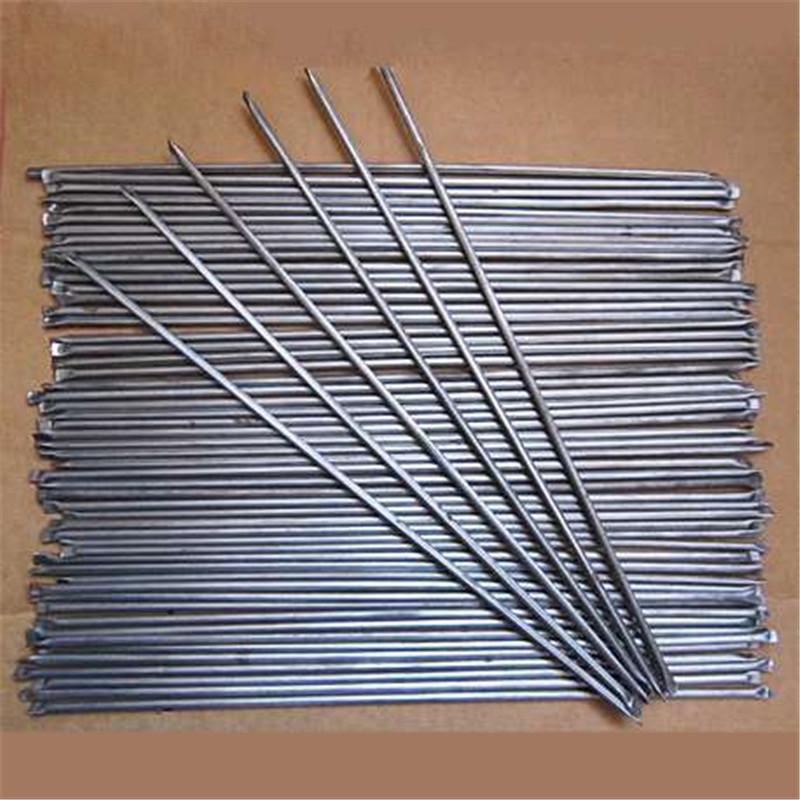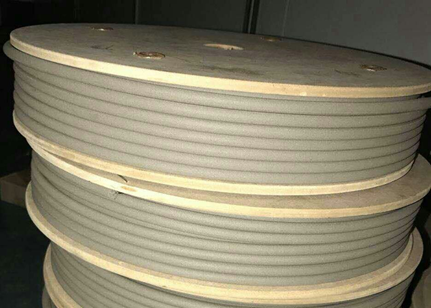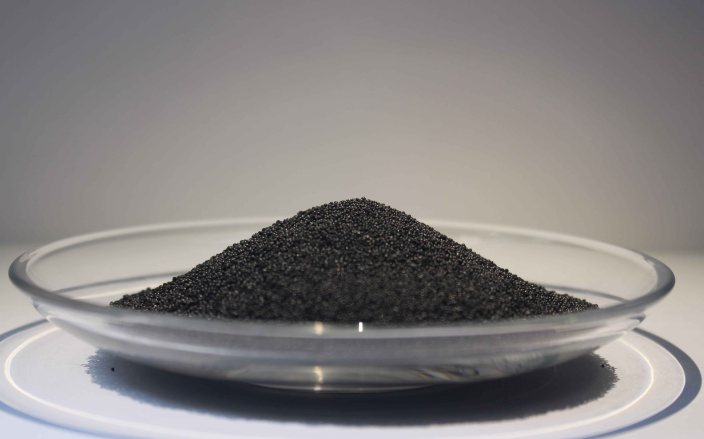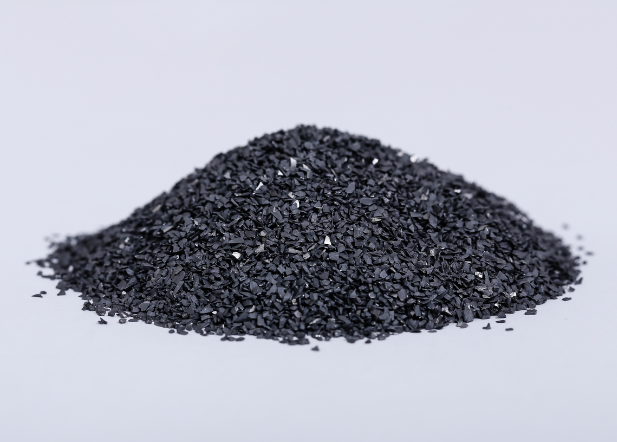1. Hose pump structure and working principle Hose pump is the pump housing, rotor body, reducer, machine base and hose 5 most of the components, shown in Figure 1. Hose pump work, the rotor body rotation, the rotor body of a pair of pressure roller along a special hose rotation, the pressure roller and the pressure generated by the casing will be flattened hose, tube flexibility in itself and the side guide roller , The liquid is sucked into the vacuum by recovering the original shape, and the liquid is discharged from the tube by the mechanical squeeze of the press roll, so as to reciprocate. The pump structure is simple, easy to make. Pump durability depends mainly on the flexibility and corrosion resistance of the pipe, the flow and the motor speed and the size of the tube diameter, so the key is to choose the tube and speed control mechanism, as long as the tube has a long enough life, speed stability, long-term There is no problem with maintaining a constant delivery. 2. Hose pump main features (1) is a positive displacement pump, its mechanical seal, self-absorption ability, self-cleaning and other characteristics. (2) No pump valve, stuffing box, will not produce the leakage of sealing pump and air resistance phenomenon. (3) simple structure, strong adaptability, liquid, gas, slurry and viscous suspended material can be transported, especially the smooth hose cavity can pump impurities liquid, a variety of fiber objects and containing the particle size of Hose diameter 1/4 below the solid slurry, and does not produce any blockage. (4) without running the pump before running, dry run, there will be no spindle seals and other failures, the pump suction liquid only contact with the hose, it can transport rubber can withstand corrosive and abrasive media, you can replace the general Stainless steel pump. (5) can be positive and negative rotation, without setting the import and export, less power consumption, high hydraulic and volumetric efficiency. (6) has a good measurement capability, can be used as a metering pump, by selecting the size of the tube and adjust the speed change flow, a wide range of flow (3 ~ 9m3 / h), measurement accuracy, high repeat accuracy (7) A wide range of pipe materials (vinyl plastic, nylon, rubber and silicone rubber, etc.), suitable for conveying a variety of corrosive, toxic, sterile, radioactive and other media. Tube diameter 0.5 ~ 75mm, working pressure up to. .98MPa, the working temperature is -62 ~ +260 '℃ The contact life of the pipe is generally 200 ~ 700h. When you can not continue to use, you can change the extrusion of the pipe or replace the new tube. (8) 1 pump head can hold 1 to 20 tubes or 1 pump Install multiple sets of pump head work, while conveying one or more media. 1 pump multi-purpose, 1 pump can replace several pumps (suction, row can be homework), small working volume, high efficiency mouth. 3. Hose pump pipe selection The key component of a hose pump is the tube, which is the only flow-through part of the pump. Only the hose to meet the technical requirements, the pump can work properly, it should be based on the purpose of use and the nature of the media to choose. Common pipe grades are: Tygon (R3603, ordinary type): inexpensive, corrosion-resistant, generally used in laboratories, can be used for good vacuum pump system; Tygon (special type): transport of hydrocarbon medium, the most suitable In gasoline, fuel oil and lubricants; Viton: can deliver special corrosive chemicals and reagents, but expensive, short service life; Silicone: meet the UADA (rubber formula test solvent) standards and the FDA (rubber formula test solvent) Wide operating temperature range, the temperature generated by the hardening of small, affordable, long life, when the pump head speed of 200r / min, 450h after work, there is still some flexibility. The choice of pipe, the main consideration of the following factors: corrosion resistance, operating conditions (pressure, temperature, flow, etc.), with or without toxicity and price. These conditions affect each other, so we should make a comprehensive trade-off before we can make economic choices. Due to the long service life of Silicone, the working time of the continuous operation of the pump head is up to 1200h when the rotating speed of the pump head is 50r / min, good elastic force, high chemical stability, non-toxic, inexpensive and adequate supply, widely used. 4. Hose pump application and effect Hefei Quartet Phosphate Fertilizer Co., Ltd. (formerly Anhui Jianghuai phosphate rock) originally used to transport pulp is 4 sets of diaphragm pumps, the transmission distance of 30m, fall Qiao m (2 parallel use, the other two relay delivery). Now after the process of transformation, use a hose diameter of 65mm hose instead of the original diaphragm pump, before and after the transformation process shown in Figure 2, Figure 3. 5. Conclusion In the early 1980s, with the rapid development of the rubber-plastic industry, new materials and new varieties of pipes with good elasticity and corrosion resistance were emerging constantly. A large number of hose pumps emerged and their varieties and products were close to the 1 / 3. Hose pump has been applied to the laboratory quantitative fluid delivery, chemical spray granulation plant, thick slurry, concentrated pulp, saturated brine delivery, sewage treatment plant sludge transport and other fields, especially in recent years in the complex phosphorus Application of fertilizer production has been made more obvious economic benefits, it is worth promoting.
1.Welding materials
In
Welding, substances called filler materials or consumables are used. As the
name implies, these substances provide filler or a body of molten materials
that provides a strong bond to be formed between the base metals used. Most
welding processes will also require some form of shielding to protect both the
main components and filler from being oxidized during the process.
The
type of welding materials used during welding depends on the nature of the job
intended. Electrodes draw the necessary energy in order to perform welding
applications. Luoyang Golden Egret Company has any kind of welding materials
include CTC Welding Rod /rope, SCTC welding rod/rope, TC electronic welding rod,
Ni-based welding rod, flux-cored Welding Wires, solid welding wires and etc.
Welding
can be applied in different kinds of industries such as building and
construction, oil and gas, marine, power generation, steel, mine tools,
automobile, transportation and etc.
2. Welding rod
1)Cast tungsten carbide based tubular
rod
The
hard phase of the rod is cast tungsten carbide which leads to higher hardness
and better wear-resistance.
Wear
resistance: the wear resistance is 6-7 times better than others. Tested by ASTM
G65
Mainly
used for Mining machinery, Geological tools, Petroleum drilling tools etc, by
Oxy-Acetylene with weak carburizing flame.
Product
recommendation:
GT1103
(CTC, 60-80 mesh),
GT1103-1(CTC, 20-30 um),
GT1103-2(CTC,
40-60 um)
2)The hard phase of tube rod is carbide
pellets which leads to higher impact resistance and better wear resistance than
CTC cloase rod.
Wear
resistance: the wear resistance is 6-7 times better than others. Tested by ASTM
G65 wear test.
Mainly
used for mining machinery. Geological tools etc; by Oxy-acetylene with weak
carburizing flame.
Product recommendation:
GT2102 (Cemented carbide grit, 30-60mesh)
GT2102-2(Cemented carbide grit, 30-40mesh)
GT2102-3(Cemented carbide grit, 40-60mesh)
3)Tube rod is composited by Cemented carbide
pellets, Spherical CTC and CTC. The layer has higher impact resistance, better
wear resistance and good fluidity than other rods.
Wear resistance: the wear resistance is 6-7
times better than others. Tested by ASTM G65.
Mainly used for oil method drill bits, such as
Tri-cone bit, Steel tooth bit, PDC bit, etc. By Oxy-Acetylene with weak
carburizing flame.
Product recommendation:
GT3302 (carbide pellets, 20-40mesh)
GT3302-1(carbide pellets, 14-40um)
4)The hard phase of the rod is monocrystal WC,
the welding layer has a higher wear resistance and better impact resistance.
The wear resistance is 6-7 times better than
others, tested by ASTM G65 method.
Mainly used for the repair and strength for oil
drills bits, such as PDC bit diameter holding by Oxy-Acetylene with weak
carburizing flame.
Product recommendation:
GT4104 (Monocrystal WC, 80-200mesh)
3. Welding Rope
Made
form mixture of CTC and self-fluxing nickel alloy covering on nickel wire. The
CTC is in spherical or irregular with good wear resistance; the nickel alloy is
in spherical or nearly spherical shape with good wettability and erosion
resistance and better corrosion resistance than tubular rod.
Recommend
to use Petroleum drilling tools, Concrete mixing blade, Mud pump, Coal sluice,
Coal drill pipe, Tunnel drilling machinery etc.
By
Oxy-Acetylene Welding with weak carburizing flame.
Product
recommendation:
GS110450N
(CTC, 4mm, HRC 47-55)
GS110550N
(CTC, 5mm, HRC 47-55)
GS110650N
(CTC, 6mm, HRC 47-55)
4. Welding Bar
The
rod is sintered by CTC and Ni-based powders. The CTC(Cast Tungsten Carbide) is
in irregular or spherical shape with better wear resistance and the nickel
alloy is in spherical or nearly spherical shape and has good wettability with cast
tungsten carbide. The cladding layer has a higher impact resistance and better
wear resistance.
Its
wear resistance and corrosion resistance is between tube rod and flexible rope.
Mainly
used on the Steel PDC bit, Concrete mixer blade, Mud pump, Miner chute, Miner
drill stem and Mechanical parts of Tunnel rock drill machine etc.
Welded
by Oxy-Acetylene with weak carburizing flame.
Product
recommendation:
GD4025253-3(CTC, SCTC, 4*600/6*600)
GD4030303-3(CTC,
SCTC, 4*600/6*600)
5. Welding wire
Intensified molybdenum titanium vanadium
composite chromium carbide welding wire can improve layer`s bonding strength
and tenacity. This wire can use for multilayer welding which has no peel off,
and it can maintain good wear resistance under certain impact working condition.
Product recommendation:GSQD671Mo-4(1.6mm)
Medium carbon and high chromium wear resistance welding wire has a higher
hardness, stronger wear resistance, and excellent toughness by adding a certain
amount of molybdenum alloys and boride. It has a better impact resistance and
strip resistance than high chromium cast iron type materials
Product recommendation: GSQD621Mo-4(1.6mm)
With
high sphericity & excellent alloy organization, cemented carbide pellet is
mainly used in welding, as an adding material of PTA Powder , tubular welding
rod, to improve the wear resistance of the workpieces greatly.
Product recommendation: GQ06
Cemented
carbide grit with different percent of cobalt has good abrasive resistance and
is widely used for making grinding, polishing and cutting tools.
Product
recommendation: GS08A
Weld Materials,Tubular Welding Rod,Welding Electrodes,Stainless Steel Welding Rod Luoyang Golden Egret Geotools Co., Ltd , https://www.xtchvof.com
Conventional pumps used in the production of wet-process phosphoric acid have various drawbacks and are now being introduced to manufacturing enterprises by their increasingly sophisticated hose pumps.
Hose pump a one-time investment, long service and maintenance cycle, less maintenance costs, operating costs decline.



